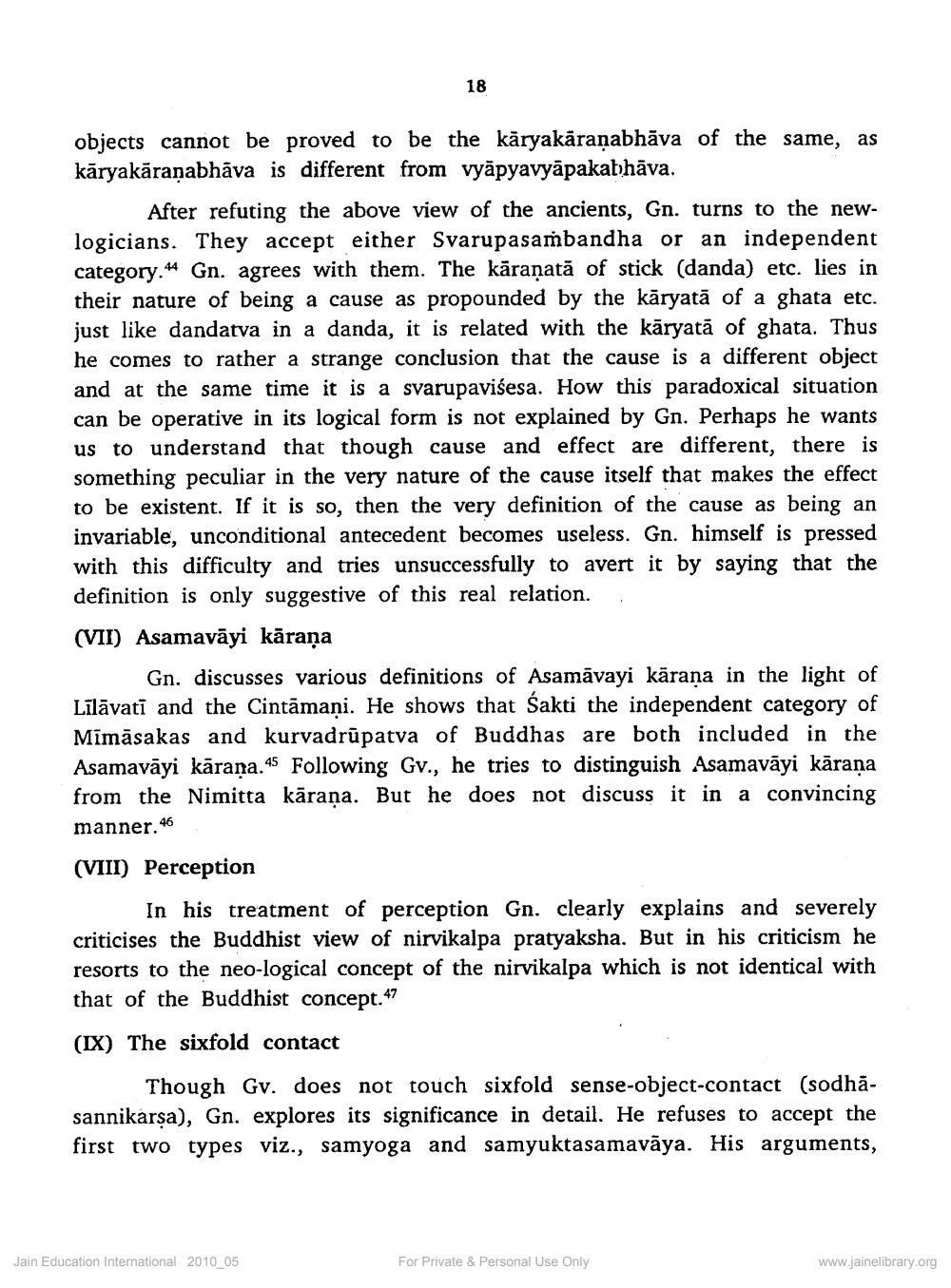________________
18
objects cannot be proved to be the käryakāraṇabhāva of the same, as kāryakāranabhāva is different from vyāpyavyāpakabhāva.
After refuting the above view of the ancients, Gn. turns to the newlogicians. They accept either Svarupasambandha or an independent category.44 Gn. agrees with them. The kāranatā of stick (danda) etc. lies in their nature of being a cause as propounded by the kāryatā of a ghata etc. just like dandatva in a danda, it is related with the kāryatā of ghata. Thus he comes to rather a strange conclusion that the cause is a different object and at the same time it is a svarupaviśesa. How this paradoxical situation can be operative in its logical form is not explained by Gn. Perhaps he wants us to understand that though cause and effect are different, there is something peculiar in the very nature of the cause itself that makes the effect to be existent. If it is so, then the very definition of the cause as being an invariable, unconditional antecedent becomes useless. Gn. himself is pressed with this difficulty and tries unsuccessfully to avert it by saying that the definition is only suggestive of this real relation. (VII) Asamavāyi kāraņa
Gn. discusses various definitions of Asamāvayi kārana in the light of Līlāvati and the Cintāmaņi. He shows that Śakti the independent category of Mimāsakas and kurvadrūpatva of Buddhas are both included in the Asamavāyi kārana. 45 Following Gv., he tries to distinguish Asamavāyi kārana from the Nimitta kārana. But he does not discuss it in a convincing manner. 46 (VIII) Perception
In his treatment of perception Gn. clearly explains and severely criticises the Buddhist view of nirvikalpa pratyaksha. But in his criticism he resorts to the neo-logical concept of the nirvikalpa which is not identical with that of the Buddhist concept.47
(IX) The sixfold contact
Though Gv. does not touch sixfold sense-object-contact (sodhăsannikarsa), Gn. explores its significance in detail. He refuses to accept the first two types viz., samyoga and samyuktasamavāya. His arguments,
Jain Education International 2010_05
For Private & Personal Use Only
www.jainelibrary.org




